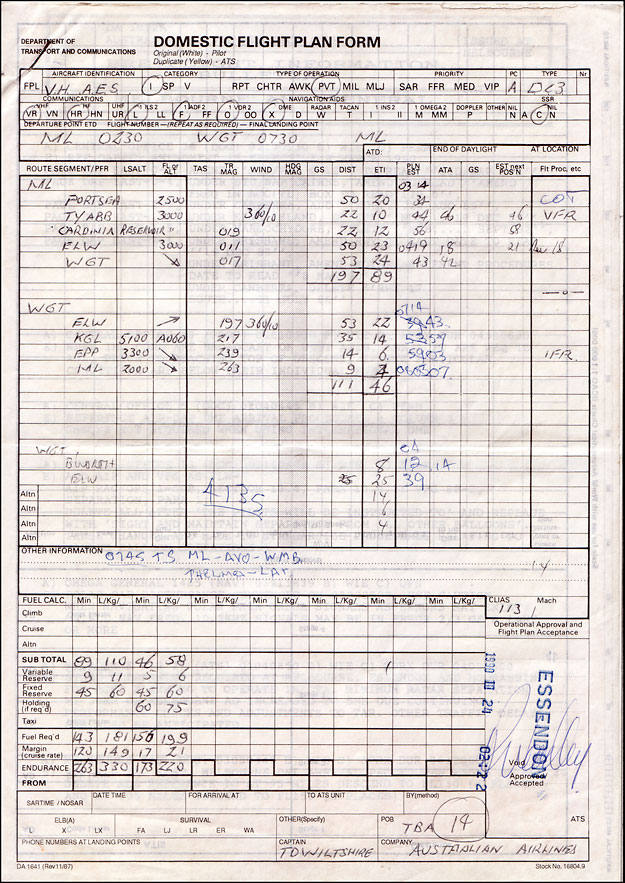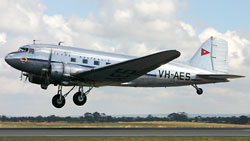From 1940 until the early 1990s the Department maintained Operational
Control over all IFR and some VFR flights - that is, control over the
inititation, continuation, diversion or termaination of the flight. This
Operational Control by the Department, unique to Australia, was a consequence
of the accident involving the DC-2 Kyeema in 1938.
Part of the Operational Control process involved approval of flight plans. The image below shows a typical flight plan as submitted toward the end of this era on 24 March 1990. It is on the standard Domestic Flight Plan Form, DA1641. Interestingly, this is a November 1987 revision of the form which still carries the 'Department of Transport and Communications' title although the organisation had become the Civil Aviation Authority some two years earlier, in July 1988.
The flight plan is for Australian Airlines' historic DC-3 VH-AES on a flight from Melbourne/Tullamarine to Wangaratta and return. In the bottom right-hand corner is the flight plan approval from the Essendon Briefing Office - the flight plan must have been submitted there even though the aircraft was to depart from Melbourne Airport. This copy of the plan is the pilot's copy. A yellow duplicate was retained by the Briefing Office and used to transmit the flight plan to all affected ATS units via the Aeronautical Fixed Telecommunications Network (AFTN).
Since the early 1990s Operational Control has been the responsibility of the aircraft operator.
Roll your cursor over the flight plan below for more information about certain items.

(Flight Plan: CAHS collection via Alan Betteridge)

< Douglas DC-3 VH-AES
(Photo: Phil Vabre)
![]()
Back to the main Air
Traffic Services index
Back to the main Flying Operations index
If this page appears without a menu bar at top and left, click here